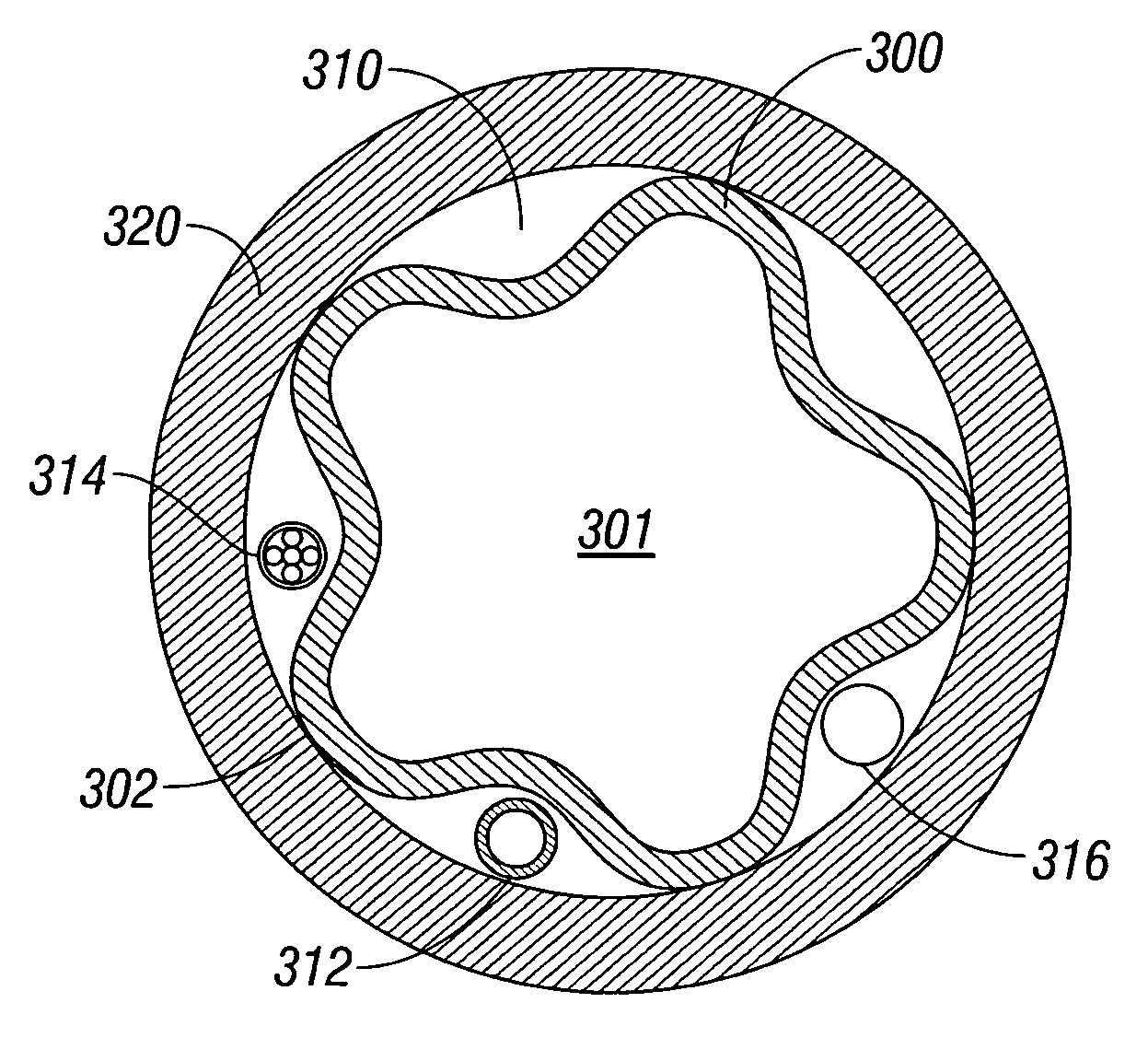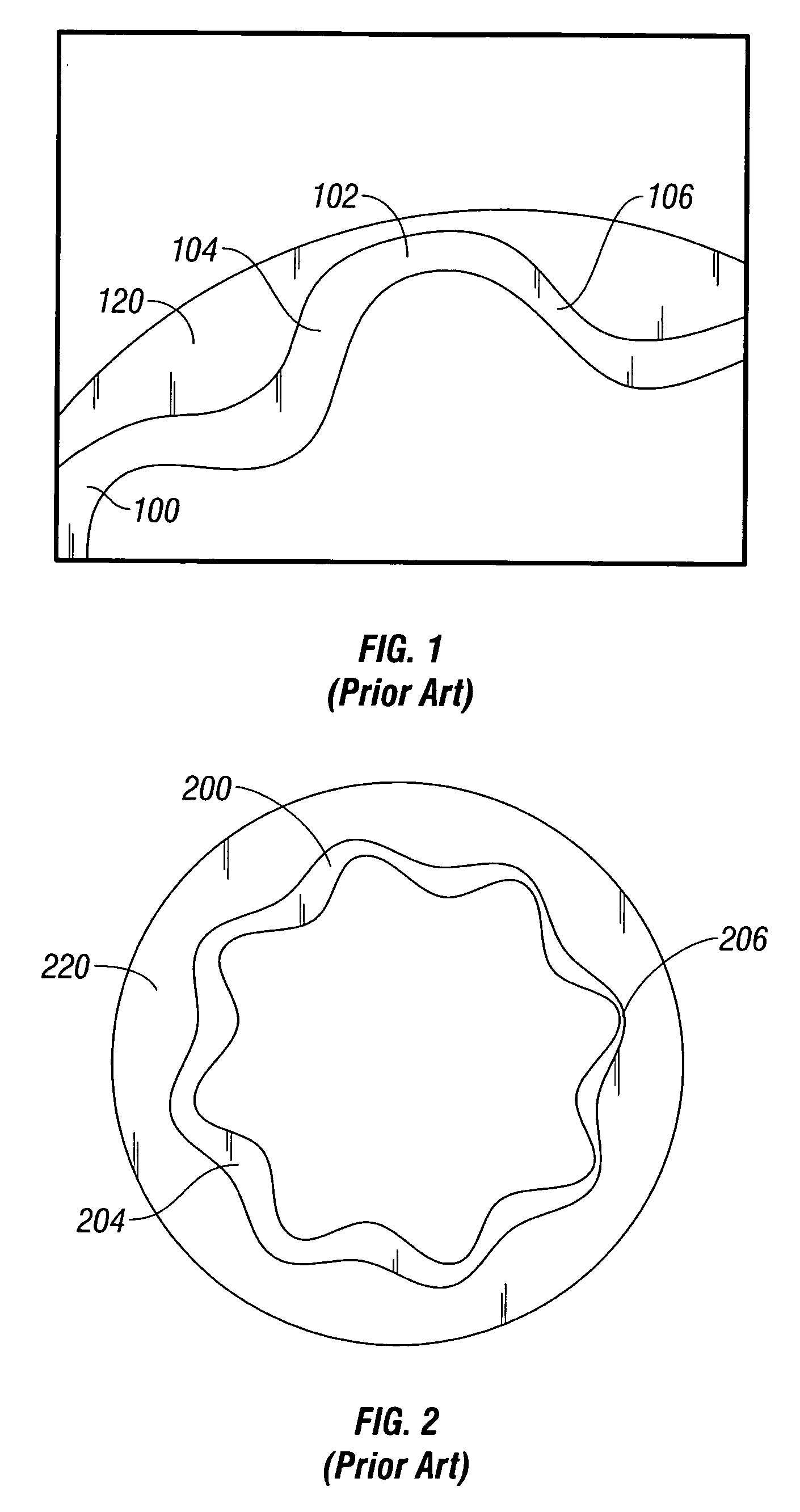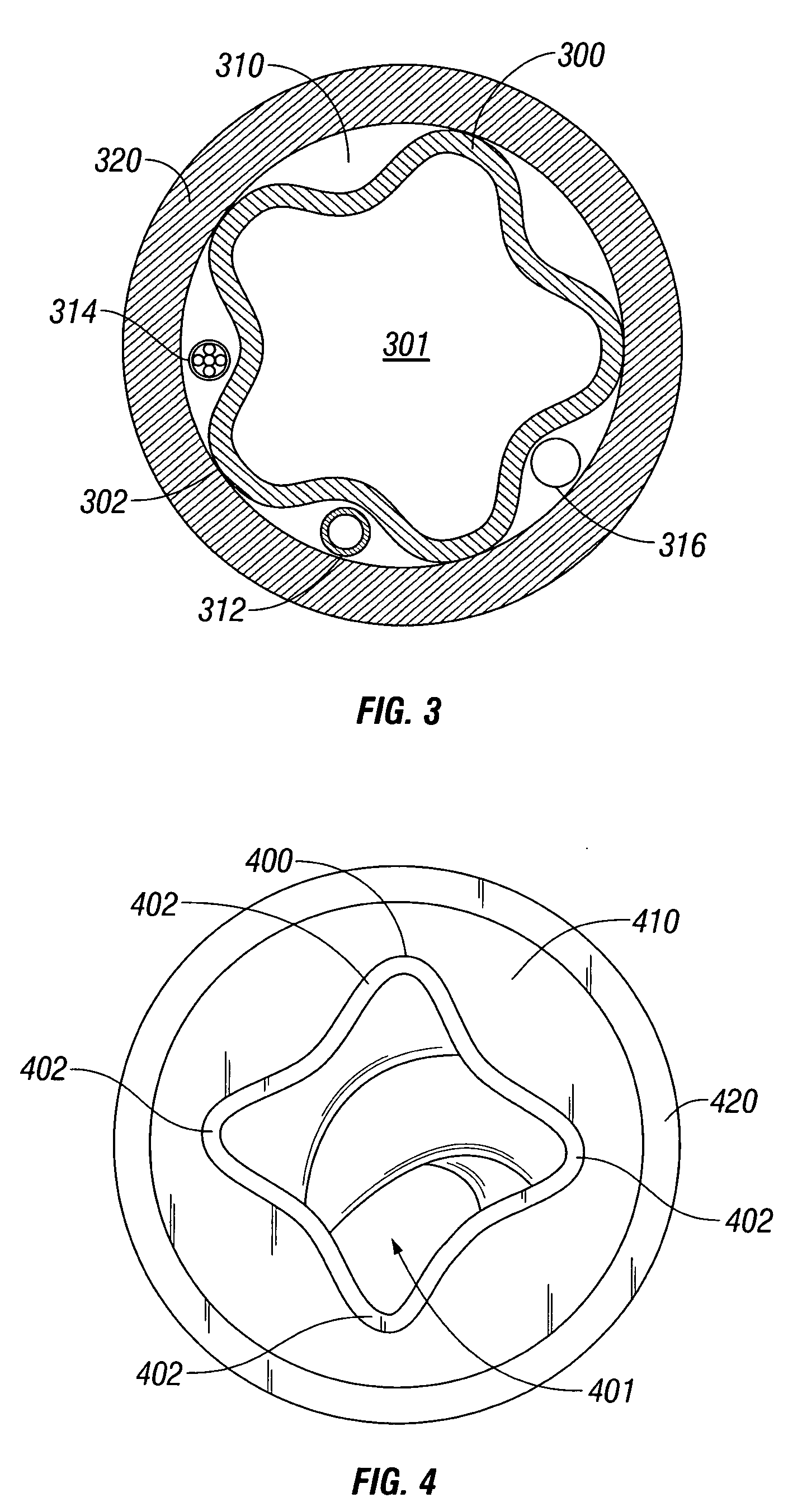Controlled thickness resilient material lined stator and method of forming
- Summary
- Abstract
- Description
- Claims
- Application Information
AI Technical Summary
Benefits of technology
Problems solved by technology
Method used
Image
Examples
Embodiment Construction
[0048]A stator used in a progressive cavity apparatus typically contains a resilient material layer in the profiled helical bore to aid in sealing the cavities formed between the rotor and stator. In a preferred embodiment, and as described below, the resilient material is an elastomer. However, one skilled in the art will readily appreciate that any resilient material can be used without departing from the spirit of the invention. A resilient material can be homogenous, composite, fiber reinforced, mesh reinforced, or formed from layers of different material, which can include at least one non-resilient layer. Preferably, the inner surface of a resilient material tube is resilient; however the outer surface of a resilient material tube can be resilient or even non-resilient and still be considered a resilient material tube as used herein. A profiled helical tube can be resilient to a cylindrical shape, for example, if the profiled helical resilient material tube is formed by confor...
PUM
| Property | Measurement | Unit |
|---|---|---|
| Thickness | aaaaa | aaaaa |
| Pressure | aaaaa | aaaaa |
| Mechanical properties | aaaaa | aaaaa |
Abstract
Description
Claims
Application Information
 Login to View More
Login to View More - R&D
- Intellectual Property
- Life Sciences
- Materials
- Tech Scout
- Unparalleled Data Quality
- Higher Quality Content
- 60% Fewer Hallucinations
Browse by: Latest US Patents, China's latest patents, Technical Efficacy Thesaurus, Application Domain, Technology Topic, Popular Technical Reports.
© 2025 PatSnap. All rights reserved.Legal|Privacy policy|Modern Slavery Act Transparency Statement|Sitemap|About US| Contact US: help@patsnap.com



